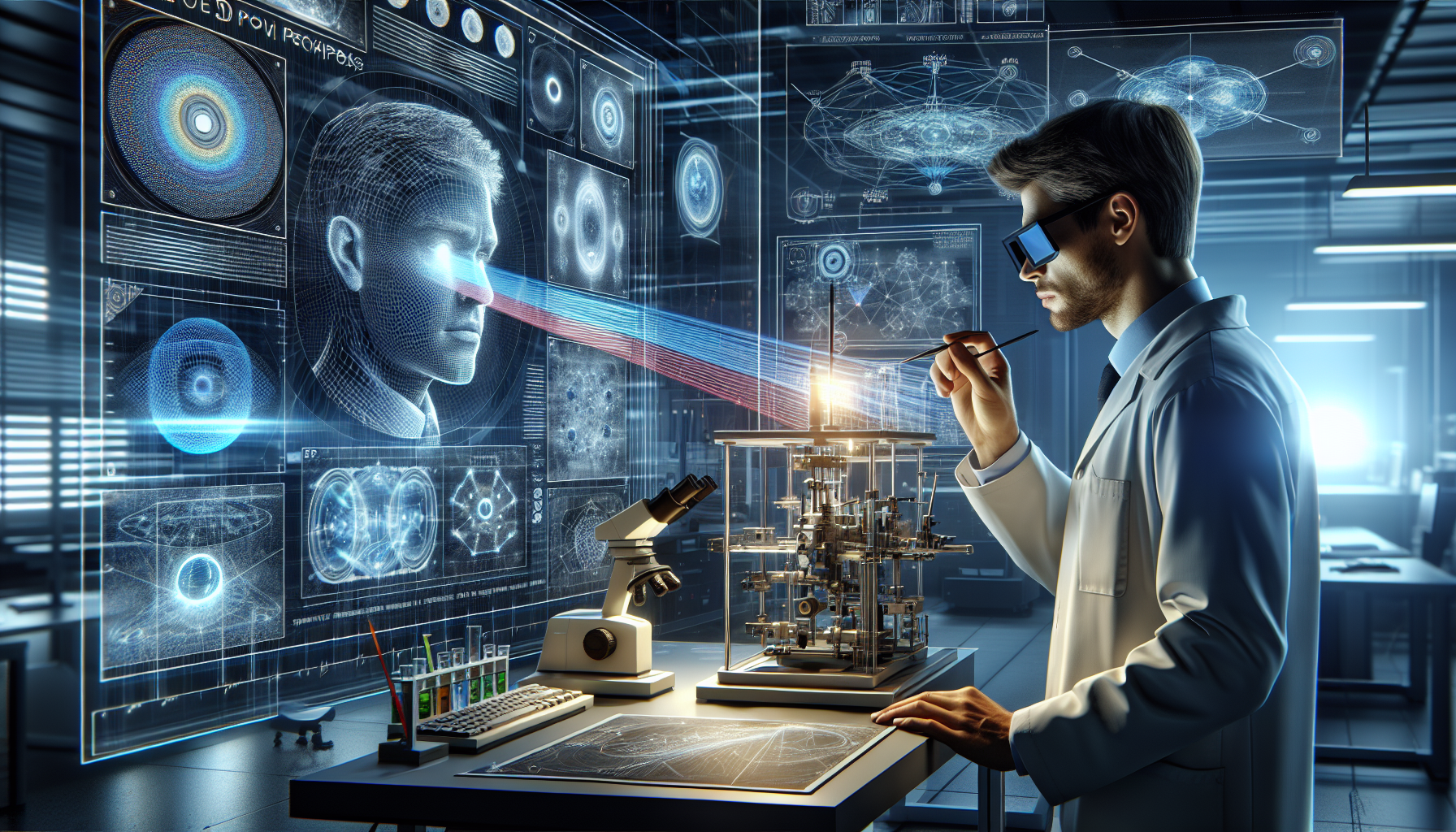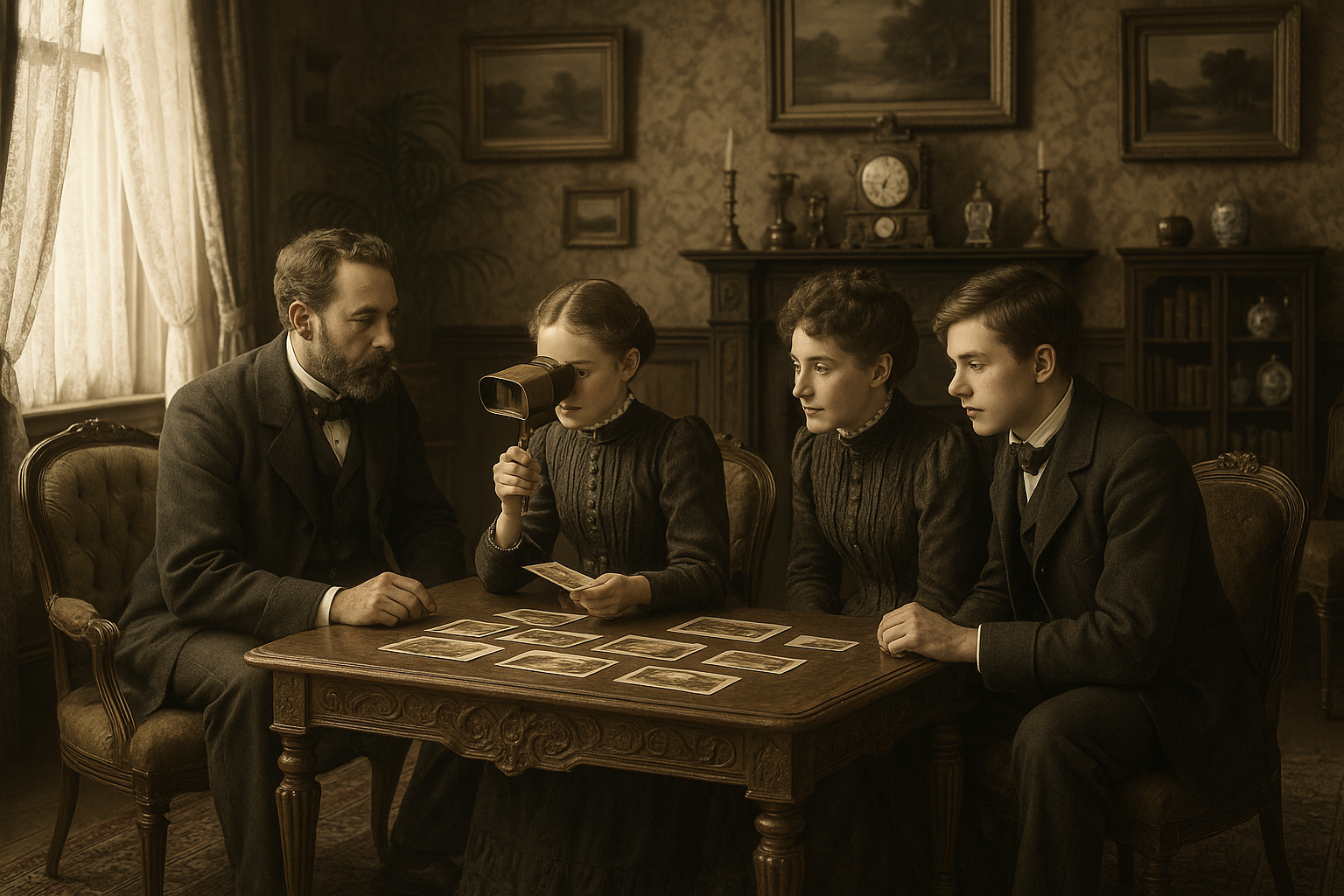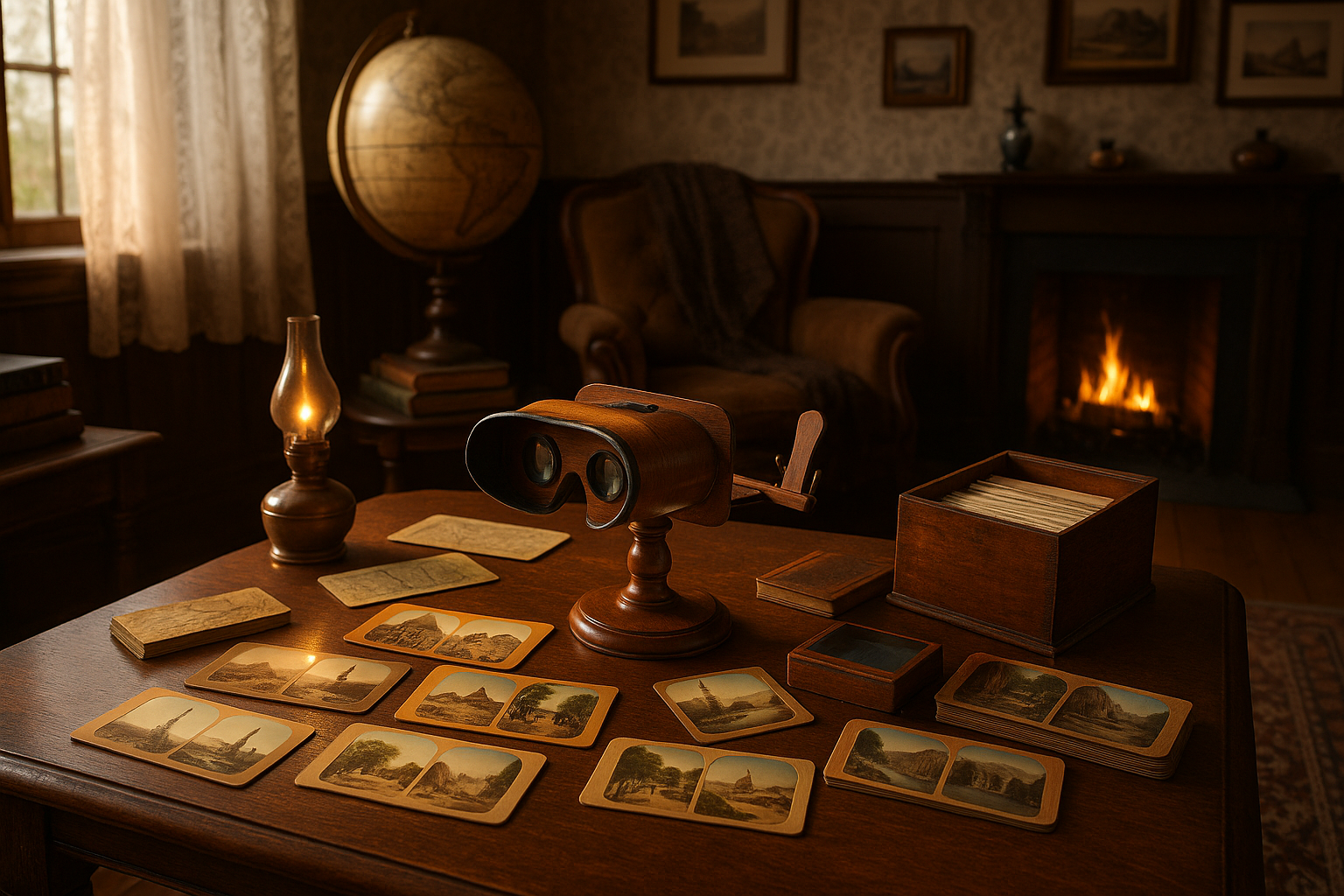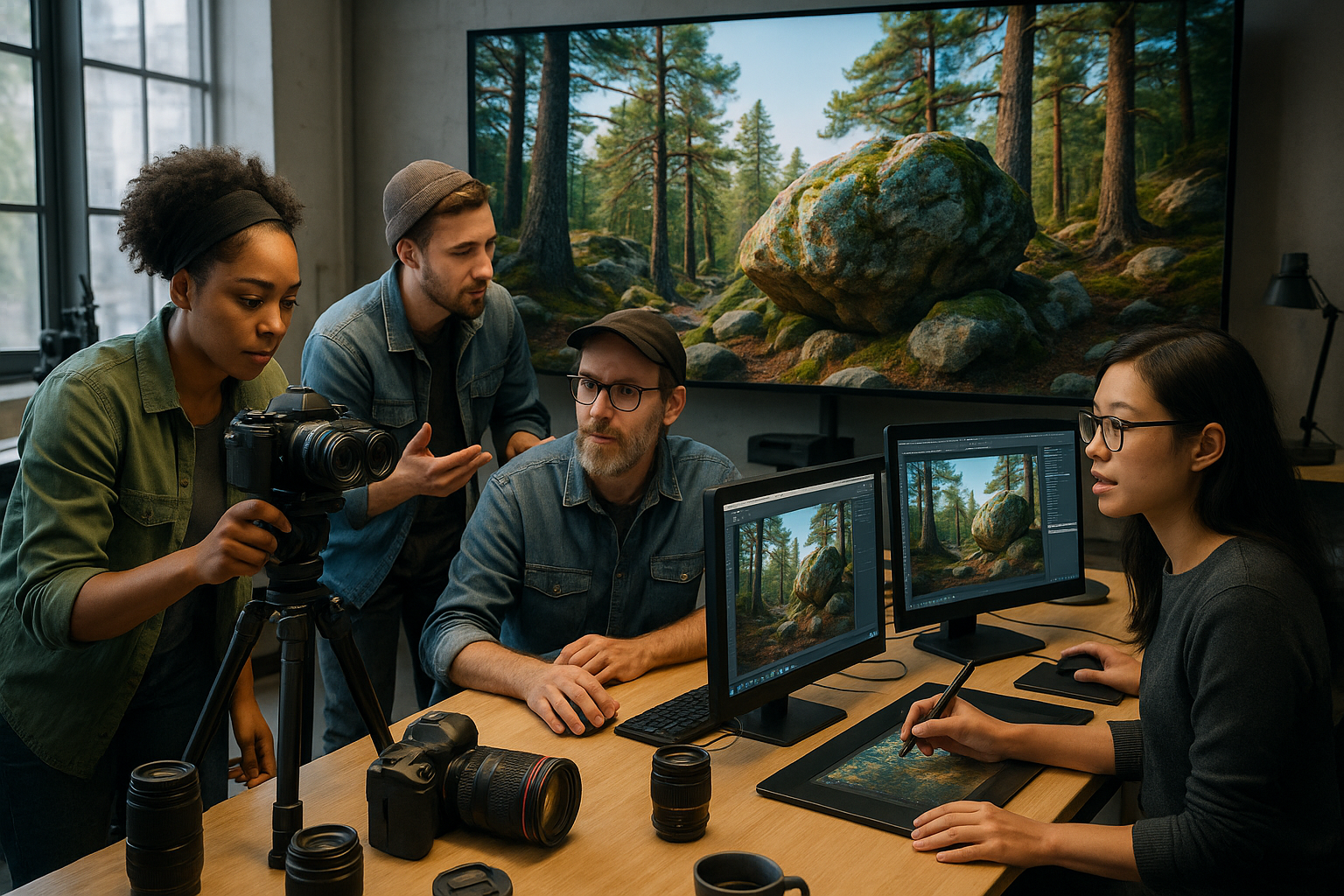In the intricate tapestry of human experience, our ability to perceive the world in three dimensions stands as one of the most remarkable feats of evolution. Imagine walking through a dense forest, where the sunlight dances through the canopy, casting shadows that play tricks on the eyes. Or picture yourself navigating a bustling city street, where the depth and distance of objects must be constantly recalculated with every step. These everyday experiences are made possible by our sophisticated 3D perception, a skill so seamlessly integrated into our lives that we often take it for granted. Yet, behind this seemingly effortless capability lies a complex interplay of biology, physics, and cognitive science. 🌍
The science of 3D perception is a fascinating field that delves into how our brains construct a three-dimensional understanding of the world from two-dimensional retinal images. This perceptual miracle begins with our eyes, which are ingeniously designed to capture visual information. However, it’s the brain’s interpretation of this information that truly unlocks the mysteries of depth and space. Our journey into the depths of 3D perception will explore the roles of binocular vision, motion parallax, and even monocular cues in crafting the rich tapestry of our visual reality. We’ll uncover how the brain uses these elements to solve the complex puzzle of perceiving depth, and how this ability has evolved to become crucial for survival and interaction.
As we delve deeper, we’ll examine the key components that contribute to 3D perception. Binocular vision, or stereopsis, is one of the primary mechanisms. It relies on the slightly different images captured by each eye to create a sense of depth—a phenomenon first explored by the early pioneers of vision science. We’ll also consider motion parallax, which allows us to perceive depth based on the relative motion of objects as we move. These components work together to create a coherent and dynamic understanding of our surroundings, enabling everything from simple navigation to the complex hand-eye coordination required for tasks like driving or playing sports.
Beyond the biological and physical aspects, our exploration will touch on the psychological and technological dimensions of 3D perception. Advances in neuroscience have illuminated how different brain regions collaborate to process depth information, while cutting-edge technologies like virtual and augmented reality are pushing the boundaries of how we experience three-dimensional spaces. These technologies not only mimic our natural perception but also enhance it, offering new perspectives and possibilities in fields ranging from gaming to medicine. We’ll explore how these innovations are reshaping our understanding of 3D perception and challenging the limits of what is possible.
As we embark on this exploration of 3D perception, prepare to see the world through new eyes. From the fundamental biological processes to the latest technological advancements, this journey promises to be as enlightening as it is engaging. Whether you’re a curious mind eager to understand the science behind everyday experiences or a professional seeking insights into the future of visual technology, this comprehensive exploration will equip you with a deeper appreciation of the incredible world of 3D perception. So, let’s unlock the secrets of how we see the world in three dimensions and discover the wonders that lie just beneath the surface of our everyday vision. 🧠✨
The Foundation of 3D Perception: How Our Brains Interpret Depth
Understanding 3D perception begins with a fundamental grasp of how the human brain processes depth cues. The world we perceive in three dimensions is, in reality, a complex interpretation of visual stimuli translated by our brains. Various depth cues, both monocular and binocular, are integral in how we discern depth and space. Binocular vision, where both eyes contribute to a single perception, is crucial. Each eye captures a slightly different image, and the brain fuses these to create a sense of depth, a process known as stereopsis. On the other hand, monocular cues such as relative size, interposition, and linear perspective offer depth information using only one eye, aiding in perception even when binocular cues are unavailable.
One cannot overlook the importance of motion parallax in 3D perception. As we move, objects closer to us appear to move faster than those further away. This difference in speed gives us critical information about the relative distance of objects. The brain seamlessly integrates these motion cues with other sensory information to refine our spatial awareness. Research has shown that this ability to perceive depth and motion is deeply rooted in our neural architecture, with specific areas of the brain dedicated to processing these cues. For instance, the primary visual cortex, located in the occipital lobe, plays a pivotal role in receiving and processing these depth cues before passing them to higher-level areas for interpretation.
The brain’s capacity to adapt and learn from different environments is a testament to its neuroplasticity, especially in terms of depth perception. This adaptability is evident in how individuals who lose sight in one eye can still navigate the world effectively, relying heavily on monocular cues and heightened sensitivity to motion. Moreover, virtual reality (VR) technology has opened new avenues for studying 3D perception, offering controlled environments where depth cues can be manipulated to observe their effects on perception. Studies using VR have underscored the role of experience and context in shaping how we perceive three-dimensional space.
Technological Implications: 3D Perception in Artificial Intelligence
The advent of artificial intelligence (AI) has revolutionized how machines interpret 3D space, striving to mimic human perception. At the heart of this endeavor are machine learning algorithms designed to process visual data and discern depth, enabling applications like autonomous driving, robotics, and augmented reality. These systems often utilize stereo vision technology, akin to human binocular vision, where two cameras simulate human eyes to capture images from different angles. By analyzing the disparities between these images, AI systems can gauge depth and spatial relationships with increasing accuracy.
Moreover, LiDAR (Light Detection and Ranging) technology is a pivotal component in 3D perception within AI. By emitting laser beams and measuring the time it takes for them to return after hitting an object, LiDAR systems create detailed 3D maps of the environment. This technology is crucial for autonomous vehicles, offering precise information on obstacles and terrain. As AI continues to evolve, the integration of multiple sensors, including cameras, LiDAR, and radar, allows for a comprehensive perception system that mimics human depth perception.
AI’s ability to perceive 3D space has profound implications for industries beyond automotive. In healthcare, for example, AI-driven imaging systems are transforming diagnostics and surgery, offering precise 3D models of organs and tissues. Meanwhile, in the realm of virtual reality, AI enhances user experiences by adjusting environments in real-time based on user interactions, creating immersive and responsive virtual worlds. These applications highlight the intersection of technology and human perception, where AI’s advancement not only seeks to replicate but also augment our understanding of three-dimensional space.
Comparison of Human and AI 3D Perception
| Aspect | Human 3D Perception | AI 3D Perception |
|---|---|---|
| Source of Data | Binocular vision, monocular cues, motion parallax | Cameras, LiDAR, sensors |
| Processing Method | Neural processing in visual cortex | Machine learning algorithms, sensor fusion |
| Adaptability | Highly adaptable due to neuroplasticity | Limited adaptability, relies on data and algorithms |
| Applications | Everyday navigation, spatial awareness | Autonomous vehicles, robotics, virtual reality |
As you can see in the table above, while both humans and AI systems are capable of perceiving 3D space, the mechanisms and applications vary significantly. This comparison underscores the unique capabilities and limitations inherent in each system.
Biological Basis of 3D Perception: From Evolution to Neuroscience
The evolution of 3D perception in humans and other animals offers insights into the biological underpinnings of this capability. Depth perception is not merely a result of evolutionary necessity but a sophisticated system developed over millennia. Predatory animals, for instance, have front-facing eyes that provide overlapping fields of vision, enhancing depth perception crucial for hunting. In contrast, prey animals often have side-placed eyes to maximize their field of view, enhancing detection of predators. This evolutionary adaptation highlights the diversity of 3D perception across species, driven by ecological needs.
At the neural level, 3D perception involves intricate processes that extend beyond basic visual cues. The human visual system is equipped with specialized neurons that respond to depth cues, such as disparity-selective neurons that become active when there is a difference in images captured by each eye. These neurons are located in the visual cortex and are integral to stereoscopic vision. Moreover, the dorsal and ventral streams of the visual processing pathway play distinct roles; the dorsal stream is involved in spatial awareness and motion, while the ventral stream processes object recognition. The interplay between these pathways enables a comprehensive perception of three-dimensional space.
Recent advancements in neuroscience have leveraged technologies such as functional magnetic resonance imaging (fMRI) to explore the brain’s role in depth perception further. These studies have revealed that depth perception is not isolated to the visual cortex but involves a network of brain regions, including the parietal and temporal lobes. This network integrates visual information with other sensory inputs, such as proprioception and vestibular signals, to maintain balance and spatial orientation. The biological basis of 3D perception is thus a complex and dynamic system, reflecting both evolutionary pressures and neural sophistication.
- Explore how different species have evolved unique depth perception capabilities.
- Understand the role of specialized neurons in processing visual information.
- Discover the neural pathways involved in integrating sensory inputs for spatial awareness.
For a deeper dive into the science of 3D perception and how it influences our understanding of the world, watch the following video:
Understanding 3D Vision and Depth Perception – Science Channel

Conclusion
As we reach the conclusion of our exploration into the captivating world of 3D perception, it becomes evident that understanding how we perceive the world in three dimensions is a cornerstone of both scientific inquiry and practical application. Throughout this article, we’ve delved into the intricate mechanisms of visual processing, examined the role of binocular vision, and explored how our brains reconstruct the depth and shape of our surroundings from a seemingly flat visual input. 🧠
At the heart of our discussion lies the concept of binocular vision, where the slight differences between the images perceived by each eye provide critical cues for depth perception. This stereopsis is foundational for humans and other animals, allowing us to interact with our environment effectively and navigate the world with precision. Furthermore, we discussed how the brain uses various monocular cues, such as perspective, shading, and motion parallax, to augment our 3D perception even when one eye is closed.
The interdisciplinary nature of 3D perception research is another significant point highlighted in our article. Neuroscientists, psychologists, and computer scientists are collaborating to unravel how our sensory systems integrate and interpret complex visual information. This synergy is not just academic but has practical implications in fields ranging from robotics to virtual reality, where replicating or augmenting human-like perception can lead to revolutionary advancements.
Moreover, we touched upon the technological implications and innovations inspired by our understanding of 3D perception. The development of 3D imaging systems, enhanced virtual reality environments, and more intuitive robotic vision systems are all testaments to the potential locked within our grasp of visual perception science. Such technologies are not only enhancing entertainment and professional fields but are also providing invaluable tools in medical diagnostics and remote sensing.
In reinforcing the significance of 3D perception, it’s important to acknowledge its ubiquitous impact on daily life. Whether we’re engaging in simple tasks like driving, playing sports, or appreciating art, our depth perception enriches our experience and enables nuanced interactions with the world around us.
As we conclude, I urge you to reflect on the wonders of our visual system and consider the myriad ways in which this knowledge can be applied. Whether you’re an academic, a technology enthusiast, or simply curious about the human experience, the science of 3D perception offers insights and opportunities to explore. Consider sharing this knowledge with others, initiating discussions, or even engaging in further research to expand our collective understanding of this fascinating subject.
I invite you to continue this conversation, share your thoughts, and perhaps contribute your unique perspective on how 3D perception shapes your world. 🌍 Let us continue to unlock the secrets of our senses and apply this understanding to create a future where technology and human experience are seamlessly intertwined.
For those interested in delving deeper into this subject, I recommend visiting credible sources like the American Psychological Association (https://www.apa.org), where you can find a wealth of information on perception and cognition, or exploring recent publications from the Journal of Vision (https://jov.arvojournals.org) to stay updated on the latest research findings.
Thank you for joining this exploration of 3D perception. May this knowledge inspire you to see the world with new eyes and embrace the endless possibilities that lie ahead. 👀✨
Toni Santos is a visual historian and artisan whose creative lens is captivated by the forgotten marvels of antique optical devices. Through his thoughtful storytelling, Toni revives the instruments that once transformed light into wonder—camera obscuras, magic lanterns, kaleidoscopes, and other ingenious tools that shaped our earliest visual imaginations.
His journey is rooted in a fascination with how humans have long sought to bend, reflect, and reveal the unseen. Whether tracing the mechanical poetry of 19th-century projectors or illustrating the tactile elegance of early lenses, Toni’s work invites us to see vision itself as an evolving art form.
Blending handcrafted design with historical inquiry, Toni brings to life the material soul of these devices—celebrating not just how they functioned, but what they meant. His creations and curated stories illuminate a world where science, illusion, and beauty were intricately linked through glass and brass.
As the curator of Vizovex, Toni shares detailed studies, reconstructed artifacts, and immersive content that help others rediscover the origins of visual technology and the magic of analog perception.
His work is a tribute to:
The craftsmanship behind early visual instruments
The wonder of seeing through the eyes of another century
The intersection of optics, art, and imagination
Whether you’re a collector, a designer, or someone drawn to the lost poetry of vision, Toni welcomes you into a world where light is a storyteller—one prism, one lens, one forgotten invention at a time.





